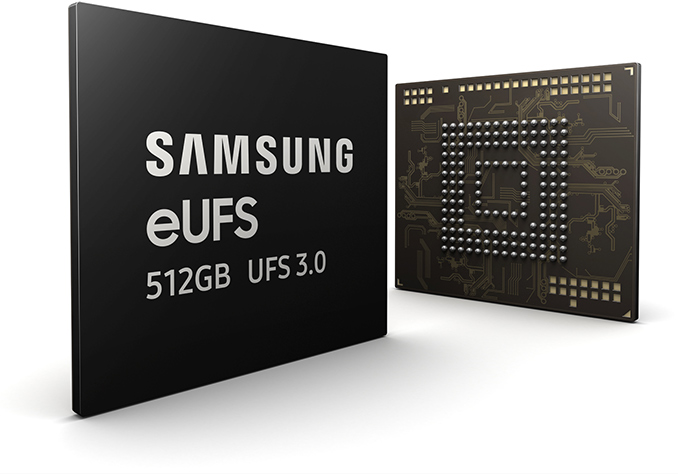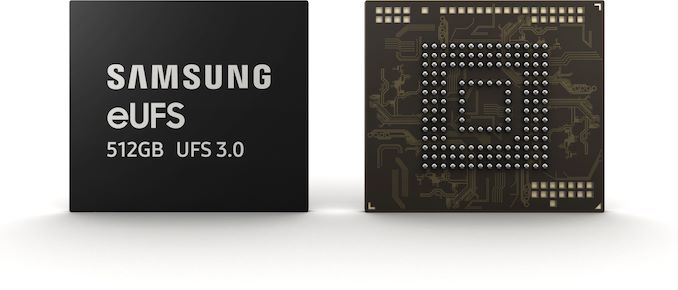FedEx just unveiled a robot designed to make “last mile” deliveries without a (human) driver. SameDay Bot, as they call it, features a set of pivoting wheels that allow it to climb shallow stairs, traverse rough sidewalks, and move at speeds of up to 10 miles an hour, according to Reuters’ report. FedEx says its working with partners like Walmart, Pizza Hut, AutoZone and Target to determine if “autonomous delivery to them is a viable option for fast, cheap deliveries.” This robot can’t throw your packages like a FedEx delivery man can, but don’t worry, researchers are working on that too.
FedEx is teaming up with DEKA Development & Research Corp, whose founder Dean Kamen invented the Segway stand-up scooter and iBot stair-climbing wheelchair, for its project. The delivery company said the robots could become part of its SameDay service that operates in 1,900 cities around the world… The project must win approval in test cities, including the shipper’s hometown of Memphis, and the first deliveries will be between FedEx office stores.
Discussion
Source: [H]ardOCP – FedEx Unveils Delivery Robots
Monthly Archives: February 2019
AMD Radeon FreeSync 2 HDR Technology Oasis Demo
AMD has announced the AMD Radeon FreeSync 2 HDR Technology Oasis Demo. The Oasis demo will allow users to explore the features and advantages of Radeon FreeSync technology over conventional display methods. The Oasis demo comes with features for full control and real-time configurable settings. The tool is intended for system integrators and sales personnel to demonstrate FreeSync and HDR technology in retail stores.
The demo is built in Unreal Engine 4 and supports HDR10, as well as FreeSync 2 HDR transport protocols. We hope that once you experience the demo live at a store, you’ll be convinced to get on the AMD Radeon FreeSync 2 HDR Technology train and never look back.
Discussion
Source: [H]ardOCP – AMD Radeon FreeSync 2 HDR Technology Oasis Demo
The U.S. May Finally Get an Early Warning System For Volcanoes

America is home to 161 active volcanoes spread across 12 states and two overseas territories. This easily makes it one of the most volcanic places on Earth, which is why it’s deeply strange that the United States doesn’t yet have a nationwide early warning system for its fiery mountains.
Source: Gizmodo – The U.S. May Finally Get an Early Warning System For Volcanoes
Samsung's New 512 GB UFS 3.0 Chip for Galaxy Fold, Now in Mass Production
Samsung this week said that it has begun mass production of its UFS 3.0 chips. The company’s initial lineup of UFS 3.0 products includes embedded drives featuring a 128 GB and a 512 GB capacity. The company plans to introduce 256 GB and 1 TB versions of its UFS 3.0 devices sometimes in the second half of this year, and we have already seen that the 512 GB edition will appear in the Samsung Galaxy Fold. Perhaps it is a shame that the chip is only just entering mass production, and missed the window for the Samsung Galaxy S10 family.
Samsung’s UFS 3.0 storage drives use the company’s 5th generation 96-layer V-NAND memory as well as a proprietary controller supporting a UFS 3.0 HS Gear 4 two-lane interface. The 512 GB version uses eight 64 GB 96L V-NAND devices, whereas the 128 GB flavor uses two of them.
When it comes to performance, Samsung says that its 512 GB UFS 3.0 embedded flash drive features a sequential read speed of up to 2100 MB/s, a sequential write speed up to 410 MB/s, and 68,000/63,000 read/write IOPS. When compared to SATA SSDs, the 512 GB UFS 3.0 device offers four times higher sequential reads, but is slightly slower as far as write and random performance numbers are concerned.
| Samsung’s UFS 3.0 Storage ICs | |||||||
| 128 GB | 256 GB | 512 GB | 1 TB | ||||
| SKUs | ? | ? | ? | ? | |||
| NAND Type | 96-Layer TLC V-NAND | ||||||
| Controller | Developed in-house | ||||||
| Interface | UFS 3.0 two full-duplex HS-Gear3 lanes 11.6 GT/s per lane up to 2900 MB/s |
||||||
| Sequential Read Speed | ? | ? | up to 2100 MB/s | ? | |||
| Sequential Write Speed | ? | ? | Up to 410 MB/s | ? | |||
| Operating Temperatures | ? | ||||||
| Health Status Monitor | ? | ||||||
| Data Retention | ? | ||||||
| Thermal Sensor | ? | ||||||
| Voltage | Memory | ? | |||||
| Interface | 1.2 V for VCCQ, 1.8 V for VCCQ2 | ||||||
| Package | Type | FBGA-153 (?) | |||||
| Width | 11.5 mm (?) | ||||||
| Length | 13 mm (?) | ||||||
| Height | 1 mm (?) | ||||||
| Availability | February 2019 | 2H 2019 | February 2019 | 2H 2019 | |||
Samsung says that its 128 GB and 512 GB UFS 3.0 embedded drives that launch today are aimed at mobile devices. The company’s own Galaxy S10 smartphones seem to use UFS 2.1 drives, whereas it looks like UFS 3.0 will debut in the Galaxy Fold.
Related Reading
- 512 GB of UFS 3.0 Storage: Western Digital iNAND MC EU511
- Toshiba Begins to Sample UFS 3.0 Drives: 96L 3D TLC NAND, Up to 2.9 GB/s
- JEDEC Publishes UFS 3.0 Spec: Up to 2.9 GB/s, Lower Voltage, New Features
- Western Digital Unveils iNAND MC EU321: a UFS 2.1 Drive Based on 96L 3D NAND
- Toshiba Samples New UFS 2.1 NAND: Up to 900 MB/s Reads For 2018 Smartphones
- Samsung Starts Production of 512 GB UFS NAND Flash Memory: 64-Layer V-NAND, 860 MB/s Reads
Source: Samsung
Source: AnandTech – Samsung’s New 512 GB UFS 3.0 Chip for Galaxy Fold, Now in Mass Production
I Lost A Fight With A Door In Apex Legends

Last night, I finally encountered what top Apex Legends players are describing as a “neat trick” or an “OP strat” but for me just resulted in a newfound hatred for doors.
Source: Kotaku – I Lost A Fight With A Door In Apex Legends
DC Universe Confirms Superboy's Casting on Titans

We already knew DC Universe’s Titans was getting a second season. And, if you watched the entire finale episode of season one, you already had a very good idea of at least one new character joining the ensemble. Now, it’s confirmed, with a casting announcement for Superboy.
Source: io9 – DC Universe Confirms Superboy’s Casting on Titans
NVIDIA Quadro RTX 4000 Review: Turing Powered Pro Graphics

Although the Turing-based GeForce RTX 2000 series hit store shelves first, it was about a week before their initial unveiling that NVIDIA CEO Jensen Huang took to the stage and announced the Quadro RTX family of workstation-class GPUs, targeting professional graphics applications. As of today, Quadro RTX series consists of four graphics cards,…
Source: Hot Hardware – NVIDIA Quadro RTX 4000 Review: Turing Powered Pro Graphics
Hyundai is building a dedicated platform for a future EV fleet
Hyundai announced today its intention to build a dedicated electric vehicle platform that will be used for a new electric car set to be released in 2020, according to CNET. The platform, part of a planned $40 billion investment into innovation, will…
Source: Engadget – Hyundai is building a dedicated platform for a future EV fleet
Kaspersky Lab Really Can't Catch a Break

Russian cybersecurity firm Kaspersky Lab has struggled to regain its reputation after it was accused of aiding Russian intelligence operations and its software was banned from use by the U.S. government. But on Tuesday, another layer of mystery was added to the story when a Russian court convicted a senior researcher…
Source: Gizmodo – Kaspersky Lab Really Can’t Catch a Break
A Video Count Of Every 'Dude' Spoken In Bill And Ted's Bogus Journey

Because you have to teach your kids how to count somehow, and maybe those Star Wars stormtrooper missed blaster shots or mentions of The Force aren’t your child’s particular cup of juice, this is a video count of all the times ‘dude’ is spoken in Bill & Ted’s Bogus Journey. The grand total? Sixty-nine! Just kidding it’s ninety-one. That would have been a cool Easter Egg though.
Keep going for the video while I create an office pool to guess how many ‘dudes’ are in the original movie.
Source: Geekologie – A Video Count Of Every ‘Dude’ Spoken In Bill And Ted’s Bogus Journey
'Prism, Prism on the Wall, Who is the Most Trustworthy of Them All?' Huawei Hits Back at US Over 5G Security Claims
The tension between Huawei and the U.S. government took a new turn Tuesday after the Chinese networking giant’s rotating chairman Guo Ping poked fun at the massive surveillance programs maintained by the United States. “Prism, prism on the wall, who’s the most trustworthy of them all?” Ping said onstage at Mobile World Congress tradeshow. From a report: Ping first appeared to attempt to make light of the ongoing row — “There has never been more interest in Huawei, we must be doing something right,” he said — but later took a more direct aim at the US and some of its own issues with cybersecurity and surveillance. “Prism, Prism on the wall, who is the most trustworthy of them all?” he said, referencing the previously secret National Security Agency surveillance project, telling the audience to ask Edward Snowden — the whistleblower who revealed the activity — if they didn’t understand what he meant. Ping also took aim at the US Cloud Act, arguing that the legislation allows the US government to demand access data held by US companies, even if it is stored in different countries. “The Cloud Act allows them to access data cross-borders. So for best technology and for greater security, please choose Huawei,” he said.
Read more of this story at Slashdot.
Source: Slashdot – ‘Prism, Prism on the Wall, Who is the Most Trustworthy of Them All?’ Huawei Hits Back at US Over 5G Security Claims
The Internet Reacts To Pokémon Sword And Shield's Starters

Today Nintendo finally released some information about the upcoming Pokémon games for Switch. They’re called Pokémon Sword and Shield, and the starters are absolutely adorable.
Source: Kotaku – The Internet Reacts To Pokémon Sword And Shield’s Starters
Get a Year of Free Flights For Deleting Your Instagram Photos

What’s the worst part of social media? Seeing friends on tropical vacations, baking under the sun, while you’re seated in a cubicle seething under harsh fluorescent lighting.
Source: LifeHacker – Get a Year of Free Flights For Deleting Your Instagram Photos
'Star Trek: Discovery' sets a course for a third season
Star Trek: Discovery has been a hit for CBS All Access, so it’s not a huge surprise that the show has been renewed for a third season. The show will continue into 2020 and with a new co-showrunner. Michelle Paradise, who joined Discovery during the s…
Source: Engadget – ‘Star Trek: Discovery’ sets a course for a third season
T-Mobile Vows Unlimited 5G Mobile Service With No Price Premium

Although there has been a bit of confusion surrounding when T-Mobile’s 5G network will first be available to customers, the is less ambiguity surrounding the details of 5G plan pricing. T-Mobile is known for helping to re-popularize unlimited data plans in the United States, and that unlimited streak will continue with 5G availability.
T-Mobile
Source: Hot Hardware – T-Mobile Vows Unlimited 5G Mobile Service With No Price Premium
Modern Warfare And The Witness Are The Only PlayStation Plus Games For March

Our monthly accounting of free games for PlayStation Plus subscribers is going to be a lot shorter from now on, as the PlayStation 3 and Vita drop out of the program this month. It’s the end of an era, folks.
Source: Kotaku – Modern Warfare And The Witness Are The Only PlayStation Plus Games For March
San Francisco to Expunge Thousands of Cannabis Convictions With Help From an Algorithm

Last year, the San Francisco District Attorney’s office said it was teaming up with Code for America, a nonprofit that aims to better government through technology. The goal was to use a Code for America algorithm to identify and expunge criminal records that could be cleared by California’s Proposition 64, which…
Source: Gizmodo – San Francisco to Expunge Thousands of Cannabis Convictions With Help From an Algorithm
WESN Graduated to Making Full-Sized Knives, Now on Kickstarter

WESN’s micro blade was one of our readers’ favorite Kickstarter projects last year, and now, the company has followed up that tiny knife with a great looking, full-sized upgrade.
Source: io9 – WESN Graduated to Making Full-Sized Knives, Now on Kickstarter
Star Trek: Discovery Will Return for a Third Season, With an Extra Showrunner

It’s not really a surprise that Star Trek: Discovery will be back for more adventures next year—after all, it’s become the jewel in CBS All Access’ otherwise pretty spartan crown. But Alex Kurtzman will no longer be the sole showrunner when it does.
Source: io9 – Star Trek: Discovery Will Return for a Third Season, With an Extra Showrunner
Cooling 2D ion crystal may pave way for large-scale quantum computer

An image of IBM’s quantum computer showing five qubits. (credit: IBM)
If I were to compare quantum computing to classical computing right now, I would say that we are somewhere beyond the point where Babbage and Lovelace left off but have not yet reached the point where someone has made a Bomba or an ENIAC. We are currently in the phase of trying to figure out what technology is best for implementing a quantum computer. And that choice is not straightforward.
One technology choice for quantum computing is the trapped ion. The challenge is to get as many ions as possible under our control in a trap. Typically, this means about ten ions, but we need more for useful computations. That makes a report of cooling a 2D crystal of nearly 200 ions down to nearly the lowest temperature possible a big step forward.
Floating checkerboard of ions
An ion, for our purposes, is an atom with an electron removed. Because of the missing electron, each ion has a positive charge, so ions repel each other. Likewise, the positive charge means that they can be fenced in with electric and magnetic fields. When ion traps are constructed just right, the ions self-organize into crystals—ions spaced at regular intervals from each other. In quantum computing, these crystals are limited to 1D—a string of evenly spaced ions.
Read 12 remaining paragraphs | Comments
Source: Ars Technica – Cooling 2D ion crystal may pave way for large-scale quantum computer



